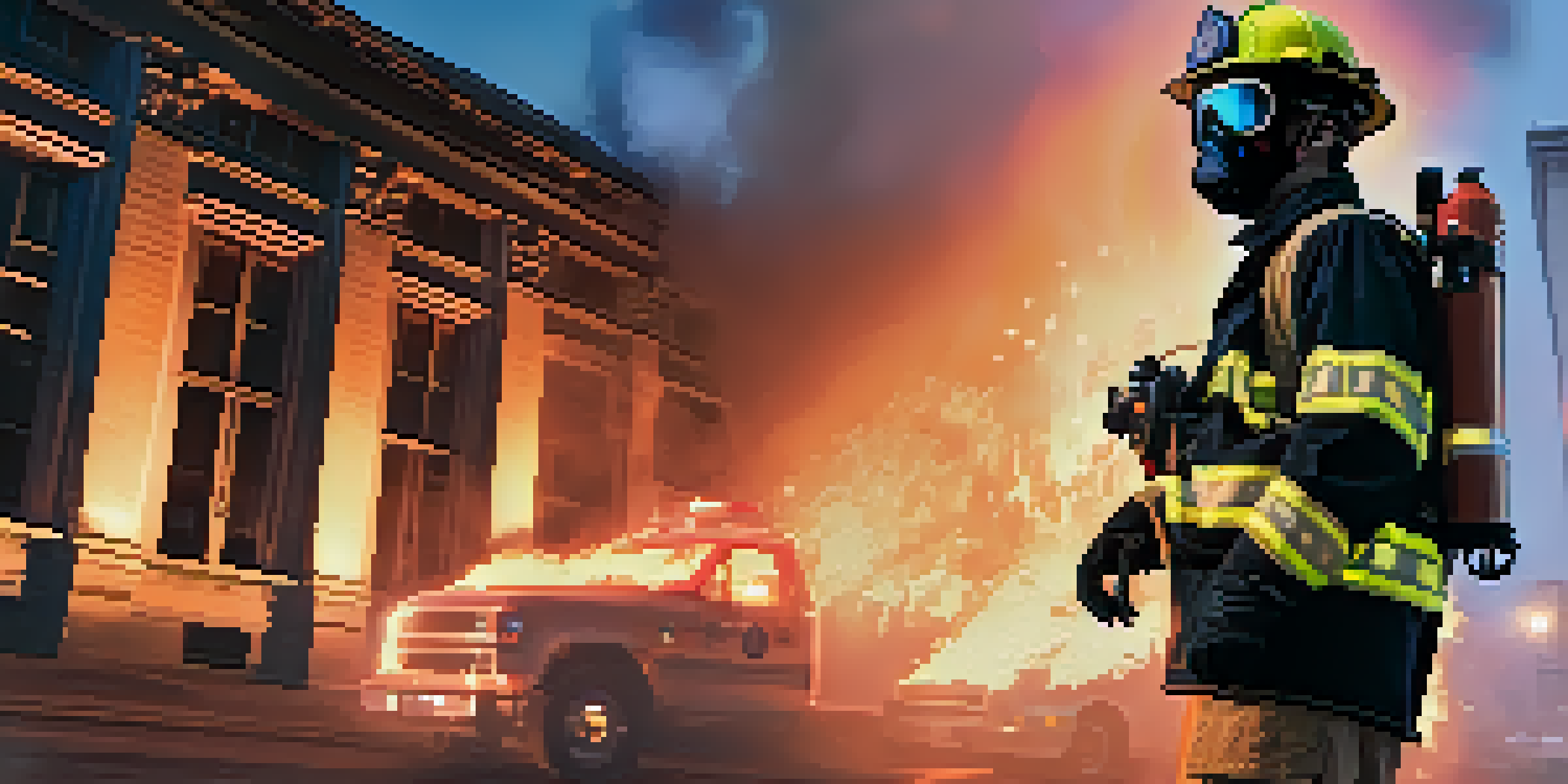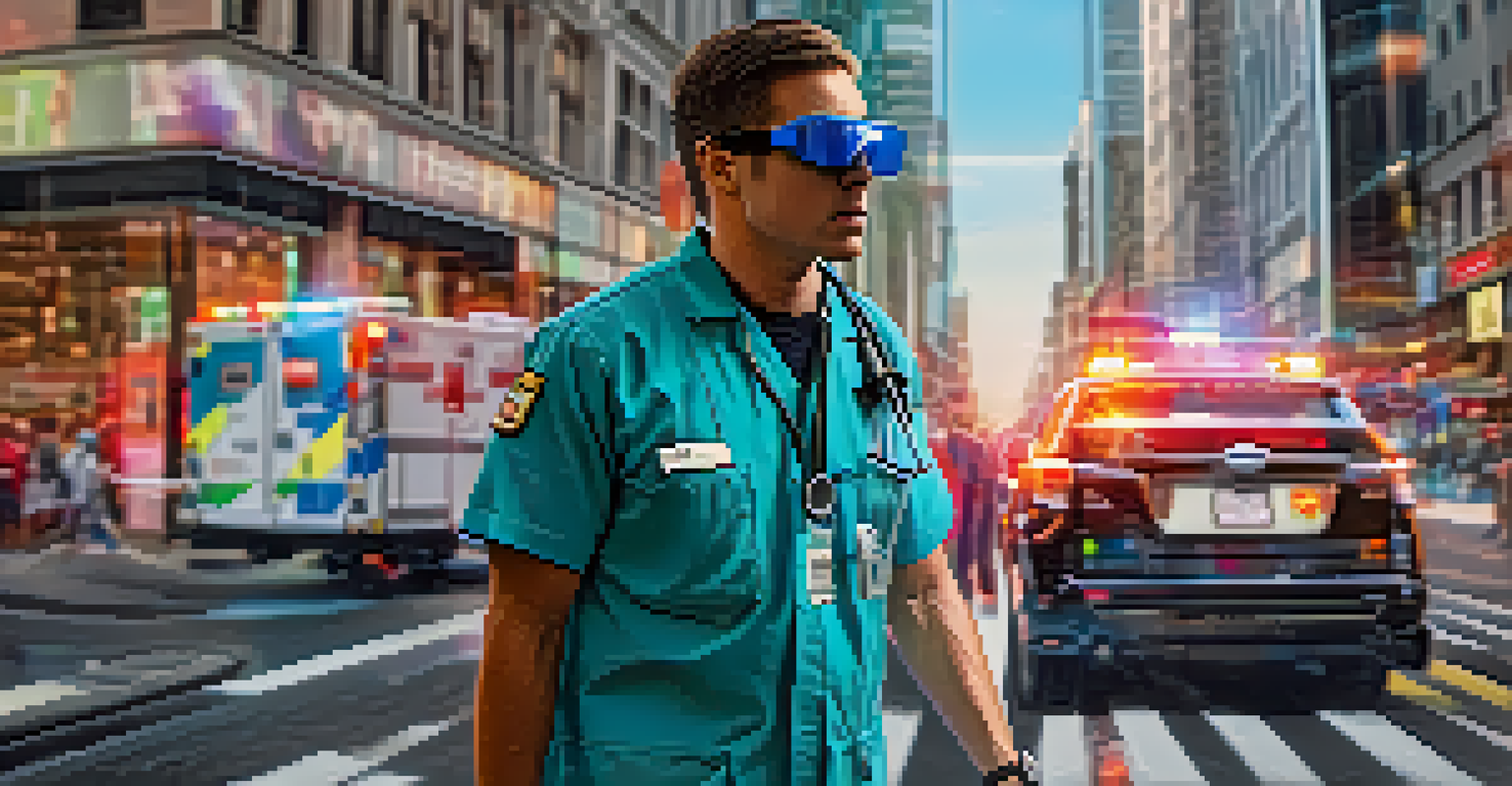AR Technology for Emergency Services: Enhancing Response

Understanding AR Technology in Emergency Services
Augmented Reality (AR) technology superimposes digital information onto the real world, providing valuable context during emergencies. For first responders, this means having immediate access to critical data, like building layouts or hazardous material locations, displayed right in their line of sight. By integrating AR with existing systems, emergency personnel can make faster, more informed decisions, ultimately saving lives.
The future of emergency response is not just about technology; it's about how we leverage it to save lives and enhance community safety.
Imagine a firefighter entering a burning building with a headset that displays a 3D map showing the fastest escape routes and areas of concern. This visual aid can be the difference between a successful rescue or a tragic outcome. As AR technology continues to evolve, its applications within emergency services become increasingly vital.
Moreover, AR can enhance training scenarios, allowing responders to practice in simulated environments before facing real-life situations. This hands-on experience builds confidence and improves overall preparedness, making AR an essential tool for modern emergency response.
Real-Time Data Access with AR Technology
In emergency situations, every second counts, and having real-time data can drastically improve response times. AR technology allows emergency responders to visualize critical information, such as current weather conditions, traffic patterns, and resource availability, layer by layer. This instant access helps them strategize and execute their plans more effectively.

For instance, paramedics can see a patient's medical history displayed through AR goggles, enabling them to make informed decisions on-site. This not only speeds up treatment but also enhances patient safety by reducing the chances of errors. With AR, the integration of data becomes seamless, allowing responders to focus on the task at hand.
AR Enhances Emergency Response
Augmented Reality provides first responders with real-time digital information, improving decision-making and situational awareness during emergencies.
Additionally, AR can assist in communication among team members during an emergency. By sharing visual data in real time, everyone involved can stay on the same page, enhancing coordination and reducing confusion in high-pressure situations.
Improving Situational Awareness with AR
Situational awareness is crucial for emergency responders, and AR technology significantly enhances this aspect. By layering digital information over the physical environment, responders can quickly assess the scene and identify potential hazards. This helps them prioritize their actions and protect themselves and others more effectively.
In crisis situations, the best tools are those that provide clarity amidst chaos.
Consider a scenario where a police officer arrives at a chaotic accident scene. With AR, the officer can see a digital overlay showing the locations of injured individuals, traffic conditions, and even nearby medical facilities. Such insights enable them to react swiftly and allocate resources where they are needed most.
Moreover, AR can facilitate the identification of structural vulnerabilities during disasters like earthquakes. By visualizing building integrity, responders can determine safe entrances and exits, ensuring they navigate the scene safely while conducting their rescue operations.
Collaboration and Training Through AR Technology
AR technology fosters enhanced collaboration among emergency services, allowing teams to share information and strategies seamlessly. During cross-agency operations, such as natural disasters, AR can provide a unified platform for all responders to visualize the situation together. This collaborative approach leads to better coordination and more effective resource management.
Training is another area where AR shines, providing immersive simulations that prepare responders for real-world challenges. By engaging in realistic scenarios with AR, first responders can practice their skills in a safe environment, honing their abilities without the pressure of actual emergencies. This type of training can lead to more confident and capable personnel when it matters most.
Training and Collaboration Boosted
AR technology facilitates immersive training and enhances collaboration among emergency teams, leading to better preparedness and resource management.
Additionally, AR can be used to train volunteers or community members in first aid and emergency preparedness. By providing interactive and visual learning experiences, AR makes it easier for non-professionals to understand and respond in emergencies, ultimately enhancing community resilience.
Challenges and Limitations of AR in Emergency Services
While AR technology offers numerous benefits, it also comes with challenges that need to be addressed. One significant concern is the reliability of the technology in high-stress environments where connectivity may be compromised. Emergency responders must be equipped with solutions that function effectively, even in offline scenarios.
Another limitation is the potential for information overload. With a wealth of data available, there's a risk that responders may become overwhelmed, leading to confusion rather than clarity. It's essential to design AR systems that present information in a digestible manner, focusing on what is genuinely relevant to the situation at hand.
Training personnel to use AR effectively is also crucial. If responders are not adequately trained to navigate AR systems, the technology could hinder rather than help their performance. Ongoing training and support will be necessary to ensure that emergency personnel can leverage AR's full potential.
The Future of AR in Emergency Response
As technology advances, the future of AR in emergency services looks promising. Innovations in wearable devices, such as smart glasses, will likely improve accessibility and user-friendliness, enabling responders to utilize AR more effectively in the field. These developments could lead to a new standard of care and response efficiency.
Moreover, the integration of artificial intelligence (AI) with AR could further enhance decision-making processes. For instance, AI could analyze data in real time, providing responders with actionable insights and predictions based on current conditions. This combination of technologies could revolutionize how emergencies are managed.
Future Innovations in AR
Advancements in AR, such as AI integration and wearable devices, promise to further enhance efficiency and effectiveness in emergency response.
Ultimately, as AR technology continues to evolve, its integration into emergency services will likely expand, leading to more proactive and efficient responses. By embracing these advancements, emergency responders can improve their capabilities and better serve their communities.
Conclusion: Embracing AR for Safer Communities
In conclusion, AR technology is transforming the landscape of emergency services, enhancing response times, situational awareness, and collaboration among responders. By providing real-time data and immersive training experiences, AR equips emergency personnel with the tools they need to succeed in high-pressure situations. As we continue to explore and refine these technologies, the potential for saving lives and improving community safety grows exponentially.
It's important for emergency services to embrace AR as a valuable asset rather than just a novelty. By investing in training and infrastructure, agencies can harness the full power of AR technology, ensuring that first responders are prepared for any scenario they may face.

As communities prioritize safety and resilience, AR technology stands out as a key player in the future of emergency response. By adopting these innovative tools, we can work towards creating safer, more responsive communities for everyone.